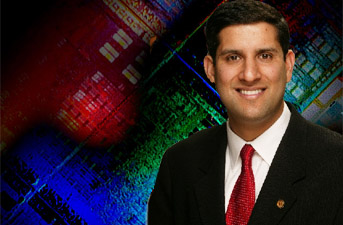
Time to retire ‘E-Government’
Rep. Derek Kilmer is set to introduce a new bill that would change all references to E-Government administrator to the Federal CIO.
The end of e-government is near. Well, at least the term “e-government.”
Rep. Derek Kilmer (D-Wash.) is expected to introduce a new bill as soon as this week that would change in law any mention of the Office of E-Government and IT at the Office of Management.
In the 33-page draft bill obtained by Federal News Radio, Kilmer spends seven pages striking out references to the administrator of E-Government and IT and replacing it with Federal CIO.
The real purpose of the bill, called the “OPEN Government Data Act,” is to push for agencies to do several things around data such as codifying OMB’s requirement for information to be released in an open and machine-readable format, requiring agency CIOs to develop and manage an enterprise data inventory, and make it public, and codifying Data.gov as the central portal for these data sets.
If you want to learn more about the bill, the Center for Data Innovation and the Data Coalition are hosting an event April 14 in Washington, where Kilmer and others will discuss the bill and why it’s needed.
While these provisions in the bill are worthwhile and continue to focus on the power and importance of data, let me spend a few minutes reminiscing about the last 15 years of e-government and how it set us up for today.
And to be clear, it’s not just Kilmer who wants to change the name of OMB’s E-Government and IT office. Sources tell me that Tony Scott, the federal CIO, and others in the administration have been eyeing this update as well.
The first real signal from the Obama administration came when it named Vivek Kundra as the federal CIO on top of being the administrator for E-Gov and IT back in 2009.
Ever since then, you rarely hear OMB mention e-government except when testifying before Congress or in official letters and related documents.
But the history of the position is important.
In 2001, the Bush administration initially named Mark Forman the associate director for IT and E-Government, a new position overseeing this emerging technology called the internet and the how agencies could use it to better serve citizens.
Forman ascended to the administrator role in 2003 after Congress passed and President George W. Bush signed the E-Government Act of 2002 into law in December of that same year.
For whatever reason, the Bush administration didn’t want to call Forman or Karen Evans, who held the job for six years after him, the federal CIO.
But whether we called it an administrator or CIO, the position is basically the same as it was 15 years ago — improve and oversee how agencies invest, protect and share information technology.
The argument over the title was always a little specious. Every agency had a lead technology executive called the CIO, the administrator of E-Government and IT led the CIO Council and was responsible for overseeing, in some cases approving, the hiring and performance of other CIOs. For all intents and purposes, the administrator was the federal CIO and why the Bush folks didn’t want to use the title was unclear.
But arguments for or against the name aside, the person in the role emerged quickly as having a huge impact on the government especially as the IT budget grew from $46 billion in fiscal 2001 to more than $89.8 billion in the 2017 request. And it’s not just overall spending, but we all know the role of technology is much different today than it was in 2010, let alone 2002.
By having an administrator at OMB in 2002, it gave other CIOs who were struggling for standing in their agency a person and place to point to emphasize the importance of their role.
And industry followed creating more enthusiasm and standing by standing up offices and divisions, and of course, the ubiquitous conferences that emerged trying to cash in on the phenomena.
Forman initiated the 23 Quicksilver or e-government initiatives as the first real power play for technology, moving paper or static services to electronic ones. That effort began consolidating similar services across the government. He even issued the only Clinger-Cohen letter in the 20-plus year history of the seminal IT law to pull together funding for similar services.
Evans followed Forman and spearheaded the drive toward better federal cybersecurity, with initiatives such as domain name security and the use of two-factor authentication for logging onto computer networks and systems.
The E-Gov administrators who followed, Vivek Kundra, Steve VanRoekel and now Scott, all have left their individual mark on the government’s technology community through cloud, digital government and now IT modernization, respectively.
But the term e-government went out long ago. Vendors stopped having e-gov offices or divisions, and away went the conferences with e-government in the title.
All along the goal of electronic government was to become just government, which for the most part it has. So maybe it is time to retire the official name of the E-Government administrator.
If Kilmer and the Obama administration want to update the position to reflect today’s view of technology executives, I think it’s fine and good. But let’s not forget where we started and why the idea of e-government set us down the road of today.
Return to the Reporter’s Notebook page
Copyright © 2025 Federal News Network. All rights reserved. This website is not intended for users located within the European Economic Area.
Jason Miller is executive editor of Federal News Network and directs news coverage on the people, policy and programs of the federal government.
Follow @jmillerWFED



